
10 minute read
Avoiding turn overs
Avoiding turn overs
It has been almost 20 years since the first C&A outrigger pads and ground protection mat feature, and while there is much greater awareness regarding their use, there are still far too many incidents involving the overturning of cranes and access equipment due to a total lack of pads/track or using inadequate items.

To be fair, most users of equipment with outriggers carry and use pads/mats. More of a problem today appears to be with the larger wheeled powered access equipment - boomswith users not appreciating the total weight of the machine and the massive difference in the forces exerted during operation. A JLG 1500 telescopic boom for example weighs about 22 tonnes however depending on the position of the boom, most of this may be concentrated over one wheel. Even moving the boom can have its problems.
A good example of this happened a few months ago in Edinburgh, Scotland when a large Dingli BT30RT punched through a pavement. The boom had been driven onto the pavement - after being unloaded or ready for collection - and one of its rear wheels found a void and sank. The rear wheels carry more weight when in the transport position because of the position of the base boom and counterweight. The machine has an overall weight of 19 tonnes so rather than 4.75 tonnes per solid poly filled tyre, the rear wheels probably carry almost six tonnes. Thankfully no one was hurt, and the damage was limited to the pavement assuming there were no sewage drains or gas mains below.
Knowing the load bearing pressure of the ground is always an issue. A few weeks ago a crane operator in Waterford, Ireland had a lucky escape when the 50 tonne crawler crane he was working with overturned. The crane was installing sheet piles when the ground appeared to have given way causing a bank to collapse and the crane to go over. Again, thankfully the operator was unhurt but the incident could have been so much worse.
The unknown element
The awareness of the ‘unknown’ element when working on any ground surface - including concrete and tarmac - is perhaps the reason why mat manufacturers such as Timbermat have seen a change in the market over the past 12 months with customers requesting thicker, heavier duty timber mats, particularly made from tropical hardwoods which offer a more robust roadway. Azobe (Ekki) mats are the most popular due to its strength and durability in all weather conditions. Perhaps it is also because of the increasing amount of extreme weather conditions both in the UK and around the world with increased rainfall and flooding in many areas affecting ground stability.

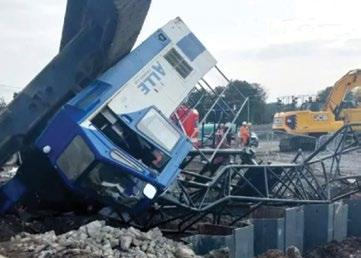
Timbermat is one of the UK’s leading independent suppliers of temporary roadways and ground protection solutions.
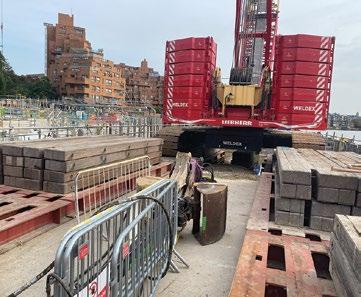
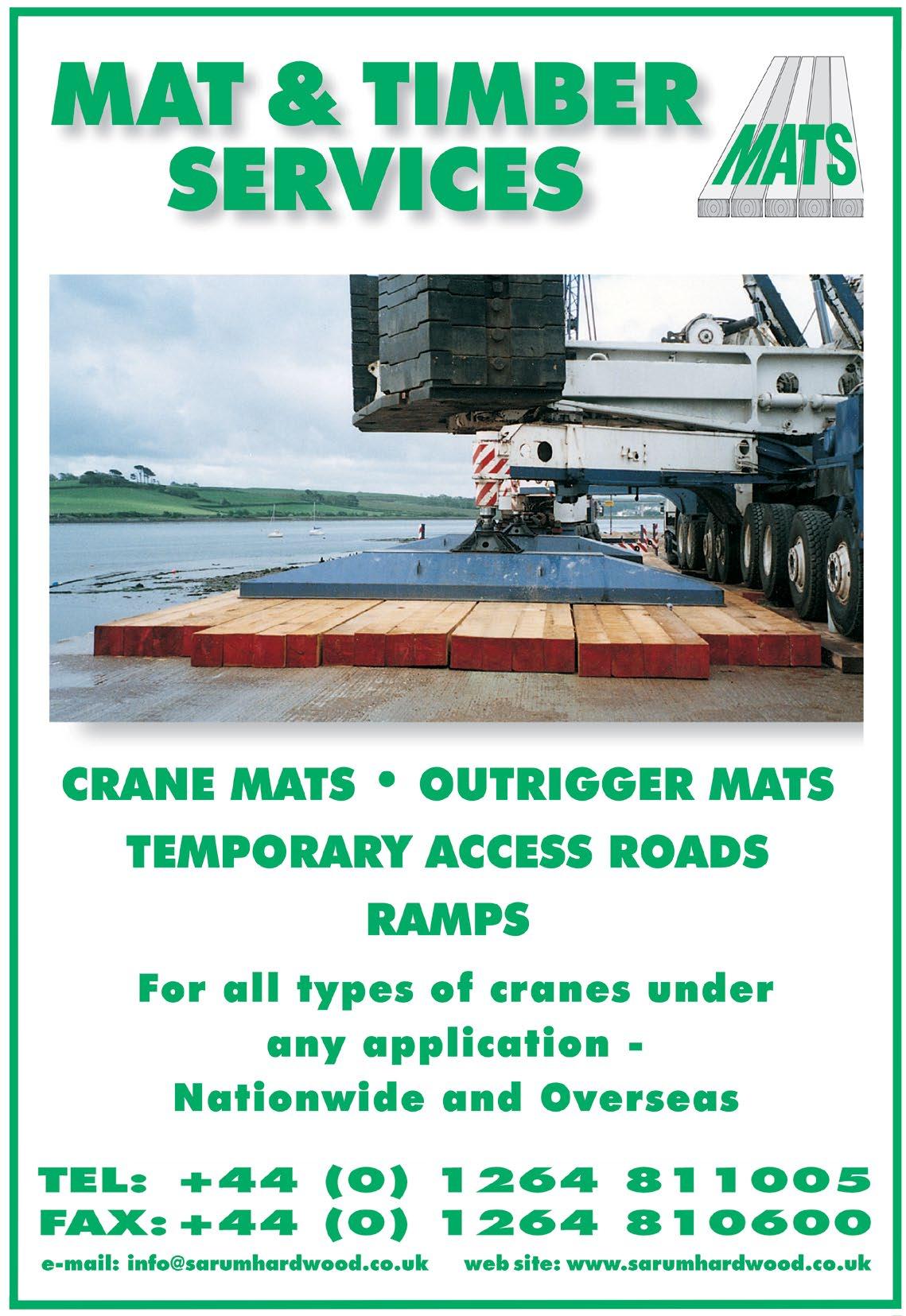
“More and more customers are currently requesting bespoke sizes over and above the standard sizes within our industry, which we can offer with our in house manufacturing,” said Timbermat managing director John Roberts. “Our FSC certification also gives our customers the peace of mind that all our timber products are sourced legally and from sustainable sources.”
Based out of Manchester, with depots in London & Edinburgh, Timbermat’s ground protection mats or bog mats have been tested and approved by both the Utilities and Rail industries through the UVDB and Link Up Supply chain network.
“We have an extensive stock whether it is for a one tonne excavator or a 250 tonne crane and can usually have mats on site the same day, or within 24 hours of the enquiry,” he said.
The company also offers a ground protection mat installation service consisting of articulated loader crane mounted vehicles operated by qualified staff. A complete design package, risk assessment and method statements are provided, and all works are carried out to comply with current health and safety regulations and any site rules provided by the customer.
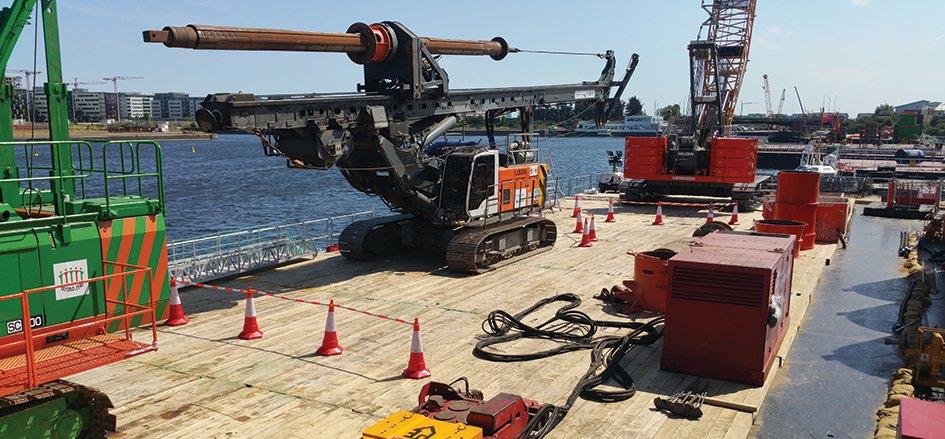

New partnerships
Finding the right dealer to distribute can also be difficult. Earlier this year Dutch outrigger mat manufacturer Nolim appointed Access Platform Sales as its UK distributor.
Nolim mats and pads are manufactured in Europe from high molecular polyethylene (HMPE), which it says guarantees product consistency and durability. The lightweight material does not absorb moisture and will not break or splinter. It also withstands diesel oil and most chemicals.
Nolim says that in the 30 years since it has been producing the mats it has never received a report of one of its mats breaking. It also adds that they are highly sustainable, given their long service life. Based in Tilburg, the Netherlands, Nolim has stepped up production following a move to a new larger facility in 2021 which is twice the size of its previous premises. The company hopes that the partnership with APS will allow it to significantly extend its reach in the UK market at a time when sales across other markets is also growing.

Nolim is part of APS’ recently formed parts business which will stock a range of its most popular outrigger mats in order to guarantee delivery within three to five working days.
Nolim Chief Executive Rogiér de Laat said: “Our outrigger mat sales rose by 15 percent in 2022. We have been selling into the UK market for eight years, but with APS now behind us, I am confident many more customers will get to use our products.”
Mastclimber pads
Another recent partnership is between US outrigger mat and rigging block manufacturer Dica and Canadian mastclimber manufacturer Hydro Mobile, to develop ‘Safetytech Support Pads’ for mastclimbers. Each pad/mat weighs around 26.5kg and features four recessed Hi-Viz green ‘TuffGrip’ handles for easier handling and storage.
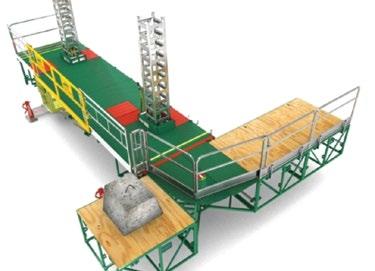
Dica chief executive, Kris Koberg said: “When Hydro Mobile wanted a single pad design made from our patented thermoplastic material that was lightweight, durable, and would work with all four series of its mastclimbers, we knew we had a challenge. We worked with them to define their needs and ground bearing pressure criteria to ensure the support pad could work in multiple configurations based on the equipment being used.”
Rob Faro of Hydro Mobile added: “We started working with Dica in 2017 to develop a pad that would provide effective support for our M2 series platforms. Earlier this year, we decided to partner with Dica again to modify the Safetytech to work with all four of our product lines.”
The Safetytech Support Pads are designed for the Hydromobile M series mastclimber

In September Dica appointed Ingo Schiller as a strategic advisor. Schiller was previously chief executive of Tadano America for more than six years but left the business in January of this year. In his new role he will be responsible for helping the company expand its distribution programmes, advising the sales team and expanding previously established Dica/OEM partnerships.
Half loader spreader module
Another new product was launched at Vertikal Days earlier this year. Alimats’ Half Load Spreader Module was designed using Finite Element Analysis (FEA) specifically for use with mobile cranes to achieve a more even load spread and higher safe working outrigger loads. The Half Loader spreads the outrigger load across two locations rather than one and replaces crane pads in the Alimats system.
Weighing 48kg the Half Loader is manufactured from EN AW 6005TA T6 certified high-grade recycled aluminium and comes with CO2 per life cycle stage analysis.
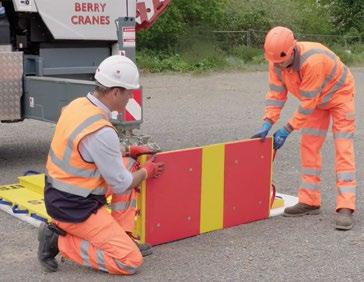
“Once we had the idea for the Half Loader, we carried out further FEA on our existing Alimats system,” said the company. “By going through a Safe Working Load process with FEA, and then a theoretical design, it proved that if we removed the outrigger load location away from the centre of the mat by distributing it across two locations, we could achieve a significantly lower applied pressure, and better load spread distribution below the mat surface.”
“During development, we wanted to understand what was going to be the stiffest Half Loader profile, yet still be handleable for two operatives. We achieved it by reverse engineering from a defined weight of 48kg that we were not willing to exceed. Next, we had to come up with the stiffest profile possible based on an extruded aluminium truss design. Then we talked to our manufacturing partner in Belgium, to see what was physically practical to produce out of the eight profile shapes we analysed. Structurally, some of the most beneficial truss profiles may perform brilliantly in simulation but aren’t possible to manufacture, something we had to embrace.”

“We ended up with the Truss Profile 7. The selection came about through a beam bending test where we loaded the profile as a simply supported beam in the middle. When we analysed deflection from those tests, it proved that Profile 7 is three times stiffer than a standard Alimats profile. For completeness, we carried out a compression test to ensure high outrigger loads would not punch through, specifically when modules are sited on hard ground. The results far exceeded any loads that would be applied from mobile crane outriggers.”
The new module is fully patented and moves the load way from the centre of the mat system, subsequently reducing the pressure applied to the supporting ground. It is suitable for use with cranes, access platforms, concrete pumps and scaffolding.
New resource for determining soil bearing capacity
In an effort to help users better assess and understand ultimate soil strengths and allowable ground bearing pressures, Dica has released a new resource page ‘Determining Your Soil Bearing Capacity’.
Before setting up a crane or other equipment with outriggers, it’s essential to evaluate the ground conditions to properly position the equipment and to use appropriate pads (size/area, strength and stiffness) to ensure it can operate safely.
Knowing the strength of the ground helps planners and operators identify the pad area needed to reduce bearing pressures to levels the ground can withstand.
“Undersized outrigger pads create risk and can lead to unstable conditions,” said Kris Koberg, head of Dica. “However, oversized pads increase weight, product cost, and ongoing transportation costs. Dica uses its ‘Everyday Fitting Process’ to help owners and users determine and define assumptions, which result in identifying the correct outrigger pad or support system.”
The resource page defines important terms such as Ultimate Bearing Capacity and Allowable Ground Bearing Pressure. It also includes a Soil Bearing Capacity Chart (see below) that outlines the Ground Type and Density of State to determine the Ultimate Ground Bearing Capacity and the Allowable Ground Bearing Capacity. ■ Outrigger pad sizing graph










